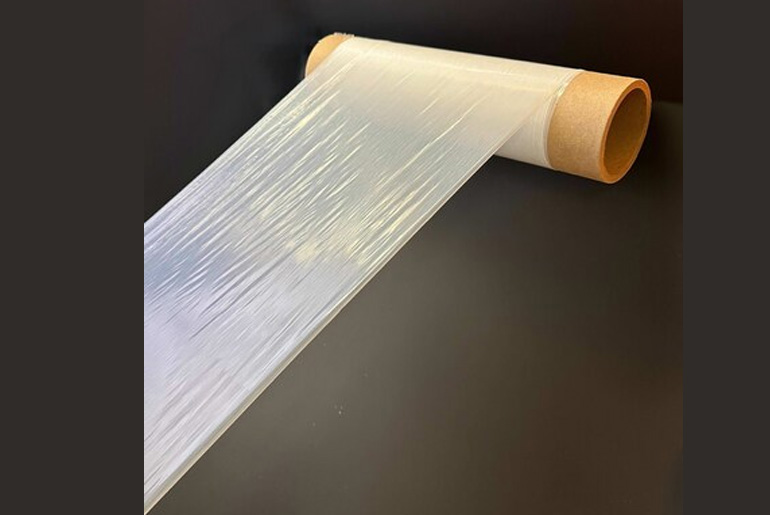In response to the present dynamics of the global supply chain, the U.S.-based battery technology firm Natrion today announced that it would start taking pre-orders for its first-generation flagship separator product. The first and only separator of its kind that reduces typical Li-ion battery cell degradation processes is the Gen-1 active separator, which is manufactured in the US and makes use of Natrion’s proprietary lithium solid ionic composite (LISIC) technology. Crucially, the material offers improved cell safety, including broader working temperatures and benign failure modes, so reducing the danger of fire, and it also provides cell bill of materials cost reductions when compared to older separator technologies.
After Natrion established manufacturing capabilities to produce the separator at scale, which were disclosed in the autumn of 2024 and have since been ramped up to gigascale levels, the commercialization comes next.
Natrion’s Gen-1 Active Separator: A Breakthrough Solution
“Our mandate was to develop a superior separator that would not only reduce the bill of materials cost of making Li-ion batteries but also enhance their performance and safety, all while dropping into current gigafactory cell lines with zero disruption,” stated Natrion CEO and founder Alex Kosyakov. “We’re proud to say we’ve accomplished that with our Gen-1 active separator, and we’ve done so as an entirely domestic product.”
Innovation in Cell Function
Natrion’s industry-leading separator technology leverages the company’s patented Lithium Solid Ionic Composite (LISIC) technology. Whereas separators have always been inactive cell components, Natrion’s LISIC-based variant possesses intrinsic liquid-independent ion transport properties. Rather than simply keeping cells’ anodes and cathodes apart and hosting liquid electrolyte as standard inactive separators do, the Gen-1 active separator operates without liquid to mediate selective charge transport between anode and cathode and block parasitic chemical processes and degradation mechanisms.
“This is a breakthrough for separator technology. In the past, only the cathode and anode could be manipulated to substantially influence cell performance,” stated Natrion Chief Technology Officer Duke Shih. “Usually only a diminished part of lithium batteries’ full theoretical power capacity can be accessed at any given time. Our active separator makes more of a cell’s capacity accessible, offering a new method of augmenting performance capability with a simple drop-in component.”
Superior Energy Density & Performance
Natrion’s Gen-1 active separator not only improves existing Li-ion battery cells, but also enables next-generation chemistries like Li-metal and Li-sulfur to be viable at scale by overcoming engineering obstacles like dendrite propagation and metallic lithium instability. Recent internal control testing of Natrion’s separator in multi-layer Li-metal pouch cells have yielded 450 Wh/kg energy density performance, a 50% improvement over current Li-ion cells, and 15-minute charging capability.
In Li-ion, the control testing also showed effective energy density increases of 10%-15% with Natrion’s Gen-1 active separator. These increases in energy density are accomplished through boosted discharge capacity availability and diminished liquid electrolyte volume.
Low-Cost, Drop-in Technology
The combined impact of reduced electrolyte and increased energy output equates to a lower cost to manufacture Li-ion cells on a $/kWh basis — a critical metric in the battery industry today and a major advantage for the gigascale domestic production required by market demands.
In addition, Natrion’s Gen-1 material is mechanically identical to legacy separators with equivalent or better thinness, flexibility, and tensile strength. This design has enabled it to be a universal, drop-in component compatible with all cell types, form factors, and assembly processes such as jelly roll and Z-folding, eliminating manufacturing barriers.
Made in America, Bolstering Domestic Supply
Natrion accelerated the launch of its all-American Gen-1 product in response to the intensifying lack of domestically-sourceable separator in the US. Sources estimate that onshore local demand will outpace supply by over 5 billion square meters per year as early as 2030 (McKinsey, 2024).
As a longstanding partner to the U.S. Department of Defense, Natrion has secured capabilities to produce the Gen-1 material entirely in the U.S. with only domestic materials. The company’s production line is in Upstate New York and its supply chain is fully insulated from tariff interruptions, making it ideal for manufacturers seeking IRA-compliant American-made components.
Natrion is now accepting conditional pre-orders for its Gen-1 active separator, subject to availability. More information as well as material specifications are now accessible on the company’s website. For more information, please contact info@natrion.com or visit www.natrion.com.



